

Every eight minutes, the Red Cross responds to a disaster to offer care, comfort, financial support and relief. But we don’t show up in a community after a disaster – we’re already here. As you’ll see on this page, the Central & Southern Ohio Region of the American Red Cross touches lives in 47 counties throughout Ohio, Kentucky and Indiana. We are your neighbors, your teachers, your students, your friends and maybe even your family - explore some of what we’ve done recently.
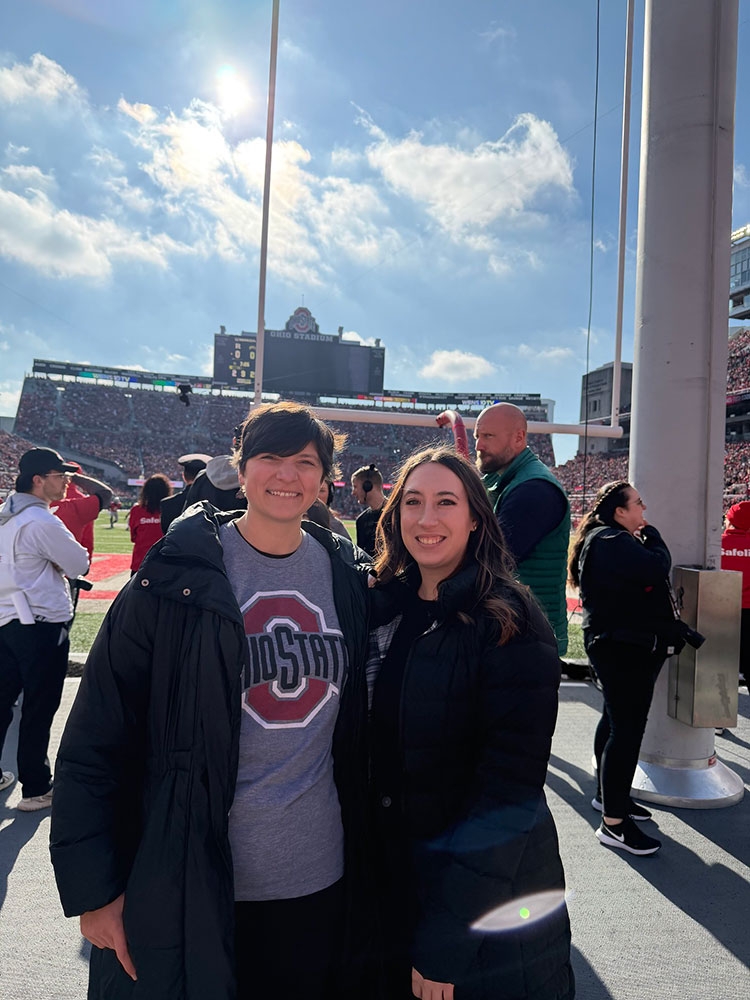
Stasia and Gita, part of our First Aid Services Team (FAST), got to see how vital their crew’s work is when a fan attending an Ohio State Football game needed care after a cardiac episode.

Little did Jim and Dave Orr know that when they installed smoke alarms in a Cambridge woman’s home that, months later, those alarms would alert her and save her life, allowing Keith Caldwell and Nick Pappas to arrive and begin her road to recovery.

For Debbie McDonnell, community service has always been more than a calling, it’s been a way of life. After a career in local government where she oversaw fire, police, and emergency management across several cities, Debbie retired and returned to her hometown in Ohio. But after decades of leading others through disasters, she quickly found herself asking: What’s next?
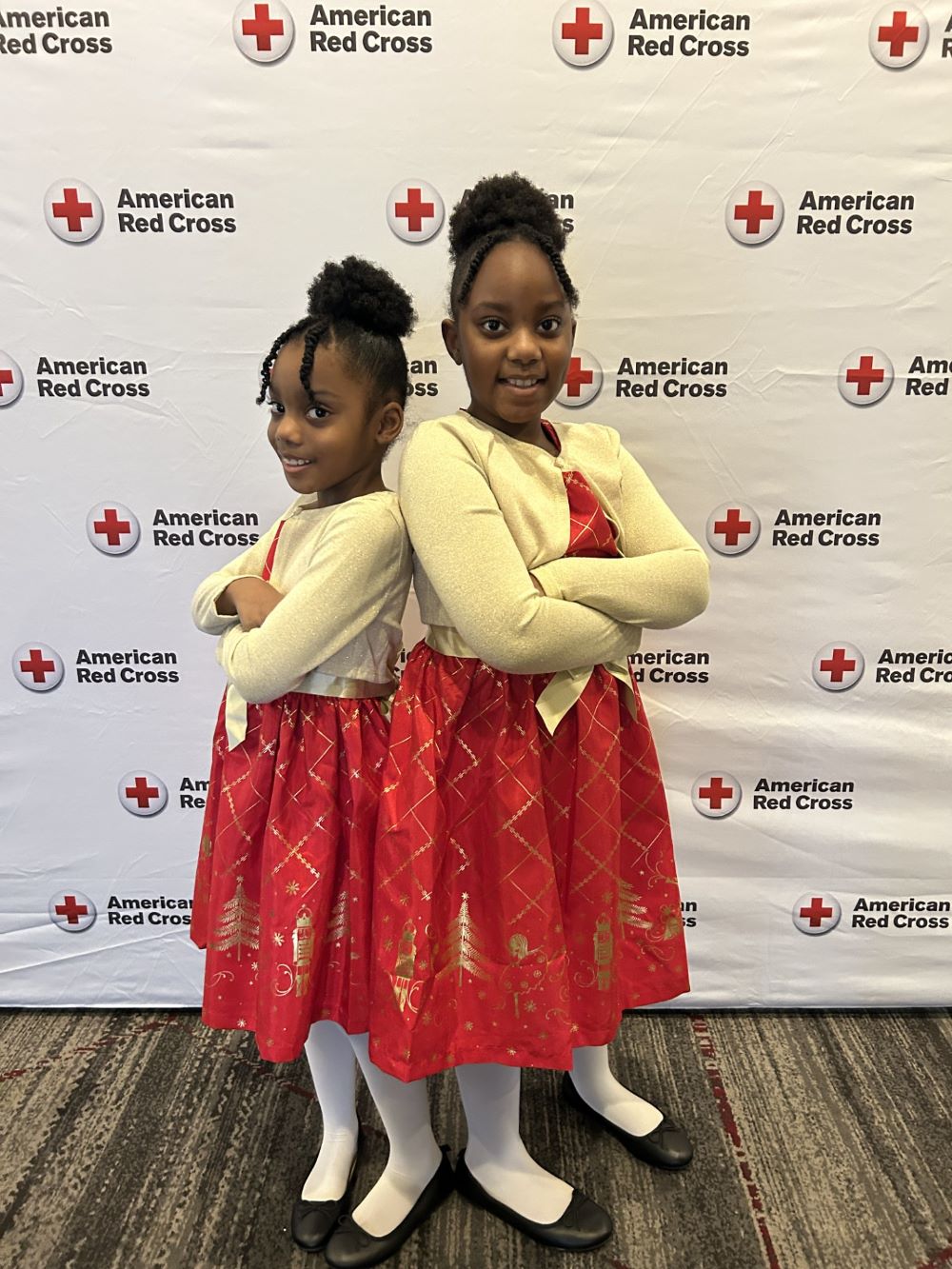
Meet Cicelia and Brianna Dobson, beautiful and full-of-life-and-love, eight-year-old twins from Columbus. Their smiles and engaging personalities hide a health struggle the girls have dealt with since birth. The twins have Sickle Cell Disease. But it doesn’t stop them or their mother Courtney who is a fervent advocate for her daughters and ultimately all who are challenged with this disease.
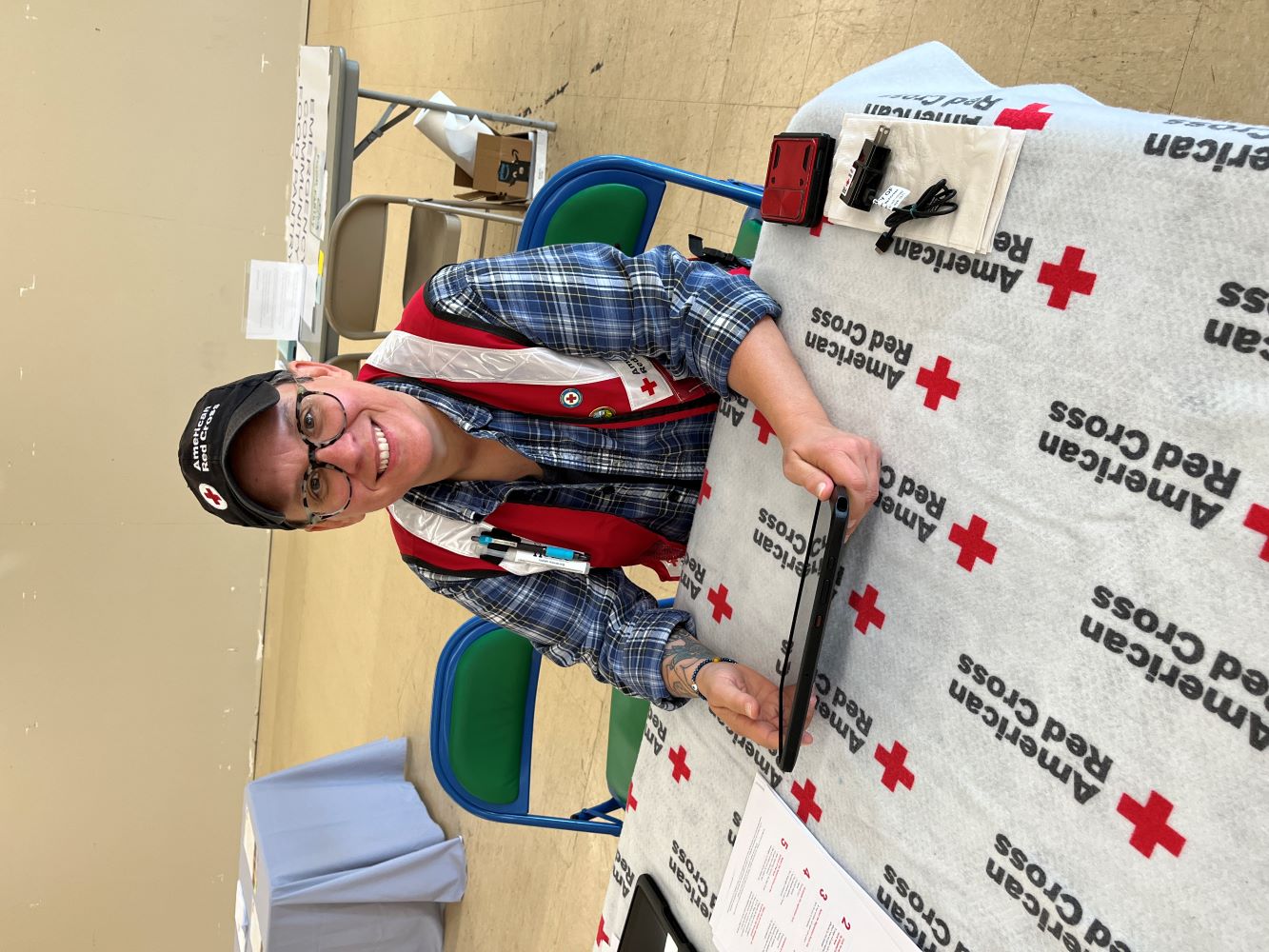
Amanda, a disaster cycle services volunteer from Columbus, Ohio, is among the 90% of the Red Cross workforce comprised of volunteers. She exemplifies the Red Cross mission: to prevent and alleviate human suffering in the face of emergencies through the power of volunteers and the generosity of donors.

After years of dedicated service, both in uniform and as an American Red Cross volunteer, Paul McEnery is retiring from his role at Wright-Patterson Air Force Base Medical Center

“There is this perception that it will never happen to you. That you do not need to hear about The Red Cross’ military emergency communication messages or deployment support because it doesn’t affect you. But I lived the mission. I continue to live the mission. I’m the biggest cheerleader for The Red Cross, and I value every day I get to work here.”

For Barb, giving back has always been second nature. A lifelong resident of Cincinnati and a retired critical care nurse, her journey with the Red Cross began at the age of 15.
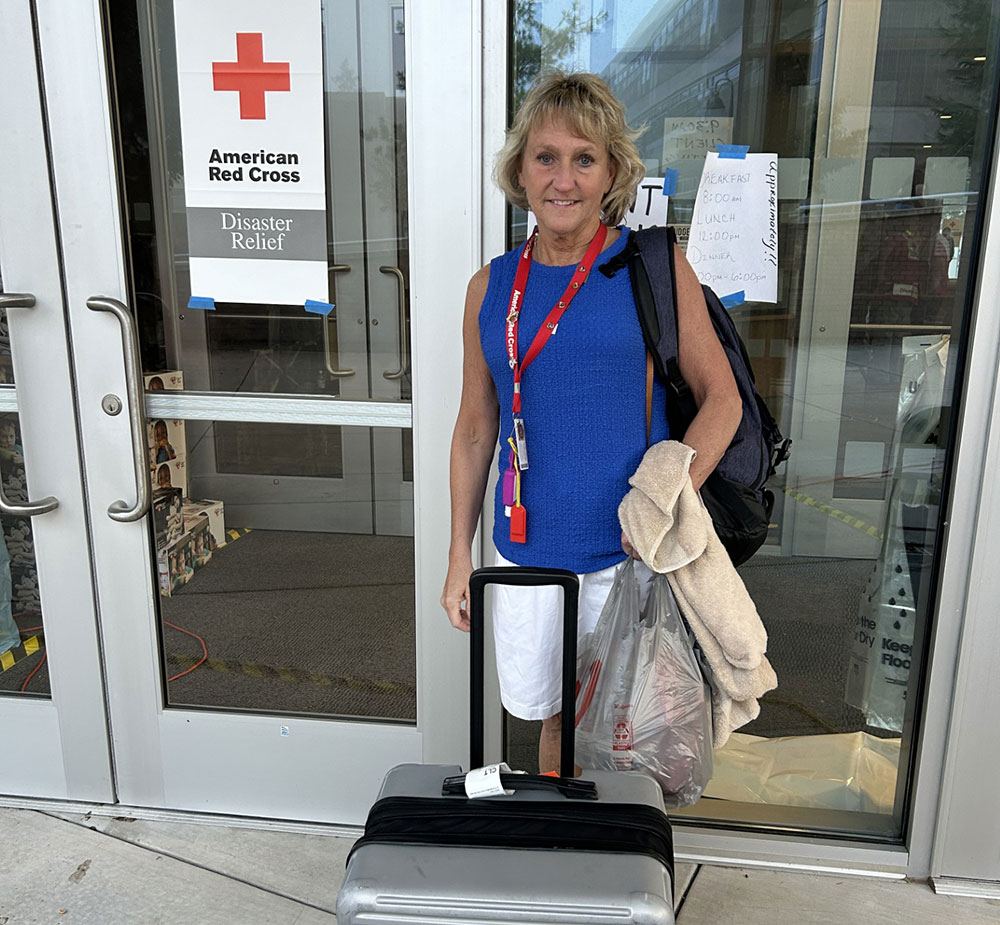
A Columbus woman is using her personal health journey and career to give back to communities across the country. Kitty Stephens began her volunteer work with the American Red Cross seven years ago, following her recovery from breast cancer. Her triumph over the disease inspired her to help others in need. Every September, to mark the anniversary of her victory over breast cancer, Kitty makes an effort to volunteer on a Red Cross disaster response mission somewhere in the country.
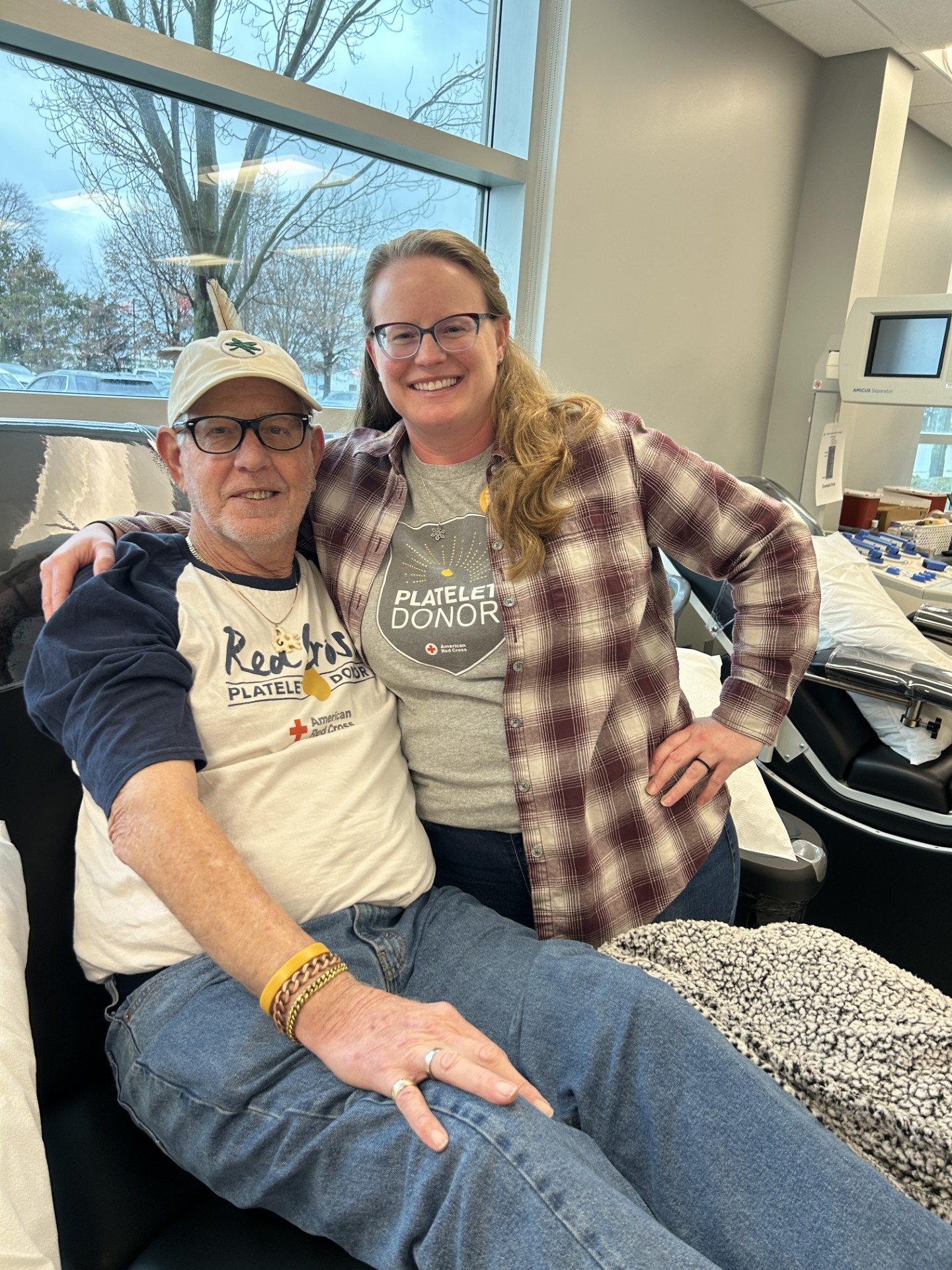
The father & daughter pair of Emily Brown and John Stout of Central Ohio have a tradition of donating much-needed lifesaving platelets together. “When possible, we try to book our appointments on the same day,” Emily said. It’s a practice that started years ago when John would donate blood on a regular cadence.

Bowman’s Red Cross story started at the age of 15 when she took lifeguard training. “I had a really good experience, and I was trying to think what I could bring back to my school.” After doing some research, she brought the idea of starting a Red Cross Club at her high school to faculty member Cindy Werner.

London Hamilton has been through more in her 10 years on this planet than some folks will ever experience. For nearly two years London has been battling Ewing sarcoma, a type of cancer that begins as a growth of cells in the bones and the soft tissue around the bones. Throughout her battle London has received 65 transfusions of blood, platelets, and plasma in addition to her 14 rounds of chemotherapy and a month of radiation. London is now in remission, but her road to getting there was anything but easy for her and her family.
Read more about London's story here.
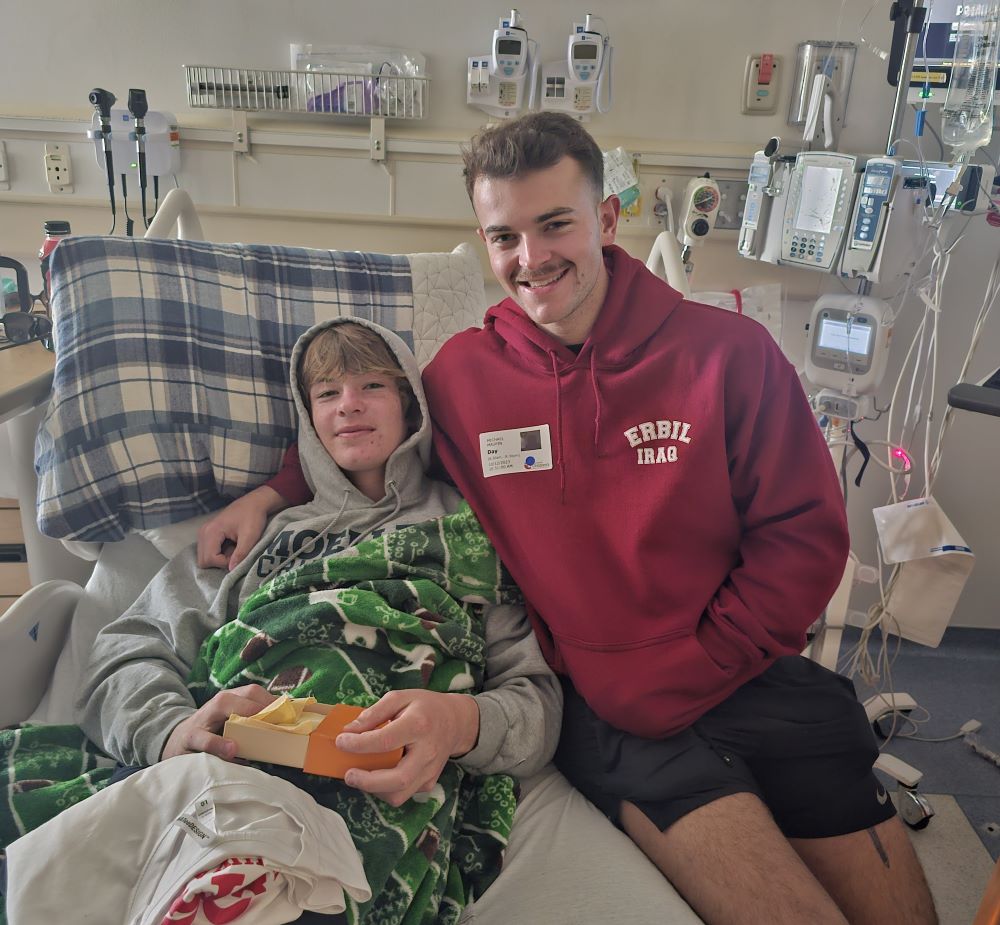
The Maupin Family of Maineville, Ohio knows first-hand the work of their local Red Cross. 15-year-old Connor Maupin was seriously injured during a Moeller High School football game. Connor had suffered a severe head injury—he was unconscious, unresponsive, and unable to move. That’s when the Red Cross stepped in. Connor’s older brother Ben was serving in Iraq, the Red Cross helped to bring him home. “I’m just in awe with how it played out and so thankful for the Red Cross,” said Leah Maupin, Connor and Ben’s mother. “We have a heart now for the Red Cross at a level that we never had before.”
Read more about the Maupin's story here.

My deployment in Hawaii was bittersweet. The people were some of the most amazing people I have ever met. Unfortunately, I was introduced into their lives when everything they had was taken away in the amount of 17 minutes. The grief process for some of these individuals all looked different and because of this, it made it very challenging for me to work for the first few days. Finding a way to do the job I love by serving this community and making them comfortable while doing it, sometimes caused me to adjust more than I expected.
Read more of Lawanda’s story here

I began donating blood at 16, as it was a rite of passage in my hometown. At first, I did it simply because I could. Over time, I donated sporadically until one day, someone thanked me, explaining that blood donations had saved his life. Another person shared how it saved her husband. Many others told me how the kindness of donors like me had saved their loved ones. Hearing these stories motivated me to become a regular donor. I donate because I am fortunate to be able to, and because it makes a significant difference. By sacrificing just a bit of my time, I can potentially improve or even save someone's life. That impact is why I continue to donate.
-Mike Shirey, Red Cross volunteer and blood donor

Diane began her volunteer career in the Red Cross chapter office in Athens, providing office support for executive directors, Sandy Shirey and Jane Patton in 2003. Over the next 20 years Diane would find herself serving in multiple volunteer roles with the Red Cross, and helping build relationships between the Red Cross and other parts of the Athens community through her work.
Read more about Diane’s 20 years of Red Cross service here

Debroah Robb was already familiar with the work of the American Red Cross through her service as a board member in the Cincinnati Tri-State Chapter, but when she was diagnosed with cancer the importance of the Red Cross and blood donations came into focus for her.
Read more of Deborah’s story here

I had never been interested in donating blood. I'd heard about it here and there throughout my entire life, but it just wasn't for me. Between 2 separate rounds of allergy shots, trying to get pregnant, and then having 2 children, I'd been poked and prodded enough. I mean, no one enjoys getting stuck with needles...why would I voluntarily sign up to do so?
Well, in July last year, I got my answer. My then 4-year-old daughter Olivia had been acting noticeably more tired and crabby than usual. We'd also noticed a few new spots on her body that we thought were new freckles. A few days passed, and the few brownish spots had changed to a reddish/purple rash all over her belly. Almost immediately, our pediatrician sent us to the emergency room. After several hours of testing, we heard the words every parent is terrified of hearing… "Your child has cancer."
Upon this diagnosis, we were admitted to Nationwide Children's Hospital, and would stay there for the next few weeks. We learned that Olivia's hemoglobin and platelets were very low, while her white blood cells were incredibly high. She would need several blood and platelet transfusions over the course of her treatment. However, there was such an extreme shortage of platelets at that time, and frequently, we could not even get them. The hospital was literally rationing them out to patients who needed them the most.
It was then that I'd signed up to donate.
I had a body full of the things she needed, why would I keep them from my daughter? And why would I keep it from anyone else for that matter? I'd seen firsthand just how quickly life can change. I had just watched my 4-year-old old have surgery, get a port placed, get accessed, and start chemotherapy. A needle felt like the least I could do.
-Jena Reif, blood donor

Ask anyone who knows Susan Hoskinson, longtime staff member with the American Red Cross Central & Southern Ohio Region, and they’ll describe her as the kind of person who brings a wave of positive energy into any room she enters. When she was feeling lethargic for days on end, she knew something was wrong.
Read more about Susan’s story here

When fire broke out at Susan and Michael Brown’s Greenville home on December 28, 2022, they were able to escape due to working smoke alarms and quick action by the couple. The free smoke alarms were installed by American Red Cross volunteers in September of 2018. At that time, volunteers Rick Hyatt and William Bunger also provided the Browns with home fire safety information, which included emphasis on leaving the home within two minutes when there’s a fire.
Read more about the Brown’s story here

Robin Sharps went to play with her dog like she had done countless times before on June 14, 2022. A neighbor’s dog came over to join in the fun, but the impromptu playdate kicked off a series of events that left Robin in the fight of her life –a fight that would end up requiring Robin to receive a staggering 114 units of blood!
Read all about Robin’s story and the role blood played in saving her life here
.jpg.transform/1288/q70/feature/image.jpeg)
More than 2,000 Red Cross disaster workers from all over the country have helped shelter, feed and support people since the tornadoes first devastated communities all over the south. For American Red Cross Central & Southern Ohio Region CEO Stephanie Byrd, a trip to Mississippi in the aftermath showed the importance of volunteers and staff at every level of the Red Cross.
Read more about Stephanie’s experience here

When lifelong blood donor Sara Scott’s father, John, was in a catastrophic car accident she saw firsthand how her blood donations, and the donations of others, helped save a life in need.
Read all about Sara and John’s story here

When a fire broke out at the Vista apartment complex in Batavia, OH, Red Cross volunteer Bob West was there to help. He was part of the Disaster Action Team that responded to assist people impacted by the fire. “It was rewarding for me to stand in the parking lot of that apartment complex at 11 o’clock on a Friday night helping the residents make order out of chaos,” Bob said. “They stood there watching the firefighters, and what was happening around them, not knowing what to do next.”
Bob and the other Red Cross volunteers stayed on scene until 4am Saturday, making sure that every resident who needed Red Cross assistance received it. People living 48 units were displaced by that fire. The Red Cross worked with them through the weekend opening cases and meeting their emergency needs.
By Monday, Bob was back at it again. This time, he was at the Crossings Church in Batavia, helping to set up cots at a Red Cross shelter for the residents of Friday night’s apartment fire. As more residents began to identify their needs, the shelter was put in place to provide somewhere safe and warm to spend the night until residents could secure an alternate place to stay. Bob’s response to the Batavia apartment fire is just one example of how he and other Red Cross volunteers help people in our community every day.
Bob retired from his job as a CFO at a manufacturing company in Blue Ash, OH last year. “I was just looking to volunteer and give back to the community,” said Bob. He now volunteers with three organizations; he volunteers with Last Mile Food Rescue delivering food to food pantries, provides free tax preparation for United Way clients and he volunteers with the Red Cross as a Disaster Action Team member. “As I talked about the possible volunteer positions within the Red Cross,” Bob said, “I told them I had been in an office for the last 40 years, I don’t want to be tied down to a schedule.” Bob found that being a disaster volunteer was a good fit for him.
Helping those impacted by the Batavia apartment fire is Bob’s most recent response to a disaster but has responded to approximately 80 home fires since he started with the Red Cross one year ago. He remembers helping a young family in Price Hill who lost their home and their possessions to a fire. “Their power went out because of a windstorm, and they went to bed leaving a candle burning in the living room,” Bob recalled. “They woke up at 4 o’clock in the morning and the first floor was fully engulfed in flames.” The family and their dog got out safely, but their cat and belonging were lost in the blaze. “He got out with his wallet; she got out with her cell phone—that’s it.” As a disaster volunteer Bob was able to help them. “I like the feeling of helping people’s worst day get a little bit better.”

Volunteers in their iconic red vests setting up cots in a large gymnasium; hot meals being served from Red Cross Emergency Response Vehicles; water and emergency supplies being delivered in storm-damaged neighborhoods—these are the images that come to mind when thoughts turn toward American Red Cross disaster response. But often times, it’s those little personal touches that have a great impact on those who have been affected by a disaster.
One of our regional volunteers, Gary Clark of Dayton, is part of a team that’s literally focused on those personal touches in the aftermath of disasters. As a member of the Red Cross Mass Care Family Reunification Team, Gary’s job is to find missing loved ones who family and friends have not been able to contact following a disaster. In the two weeks Gary spent in Florida in response to Hurricane Ian, his team was able to make up to 50 emergency welfare inquires, calming the nerves of worried loved ones.
“We go into these neighborhoods, with all these damaged homes hoping we can find the people the seekers are looking for,” Gary said. “A lot of people aren’t in their homes, but we go in hoping to bring positive closure.” Locating 75-year-old Sandra Curanzy of Port Charlotte, Florida is one of Gary’s “positive closures.”
Sandra hadn’t been heard from in two weeks following Ian’s devastation. Phones were down, power was out—her friends were unable to determine Sandra’s fate. There was reason to worry, Sandra is dependent on portable oxygen and her home was in an area that was heavily damage by the hurricane.
In their attempt to find her, Sandra’s friends contacted the Red Cross. Gary’s team was sent to do an Emergency Welfare Inquiry on Sandra. Combing through the devastated neighborhood that Sandra called home, the team was able to locate her!
Her home was damaged and unlivable—but Sandra was safe staying with another family member a few blocks over. When Gary’s team located her, she was sitting in her parked car waiting for FEMA to arrive. Gary was able to provide Sandra’s friends with the comforting news that she had survived the storm.
In speaking with Sandra, Gary was able to determine she had additional needs. She was without her medication since the storm hit. Her home was too damaged for her to go back inside to retrieve her pills and she couldn’t reach her doctor for a refill. Gary’s team referred Sandra to the Red Cross Disaster Health Services which was able to provide her with her needed medication.
“It’s just amazing the types of needs people have after a disaster,” Gary said. “It’s satisfying to be able to offer that extra help.”


Vietnam veteran E-Rich Harrington proudly shows off the 10 Red Cross pins he wears on his vest. Each pin represents one gallon of blood he’s donated. Mr. Harrington has distinct protein structures on his red blood cells that make his donation the most compatible blood to help patients with sickle cell disease.
It’s estimated that 100,000 people in the United States, the majority of whom are of African descent, have sickle cell disease and may require blood transfusions throughout their lifetime to help manage their disease. Blood donations from individuals of the same race or similar ethnicity and blood type have a unique ability to help patients experiencing a sickle cell crisis.
Mr. Harrington knows this and is a dedicated blood donor because of it. “I’ve been donating since ’72 when I got out of the service to send back for the Vietnam vets,” Harrington said. “Now I donate blood for the Sickle Cell Kids, they told me that my blood has properties in it that help Sickle Cell Anemia Kids so that just make me want to do it {donate} even more.”
Mr. Harrington encourages other African Americans to make much-needed blood donations. Blood donations from members of the Black community help support patients with sickle cell by providing closely matched donations of the same blood type, race, or similar ethnicity to reduce transfusion complications.



